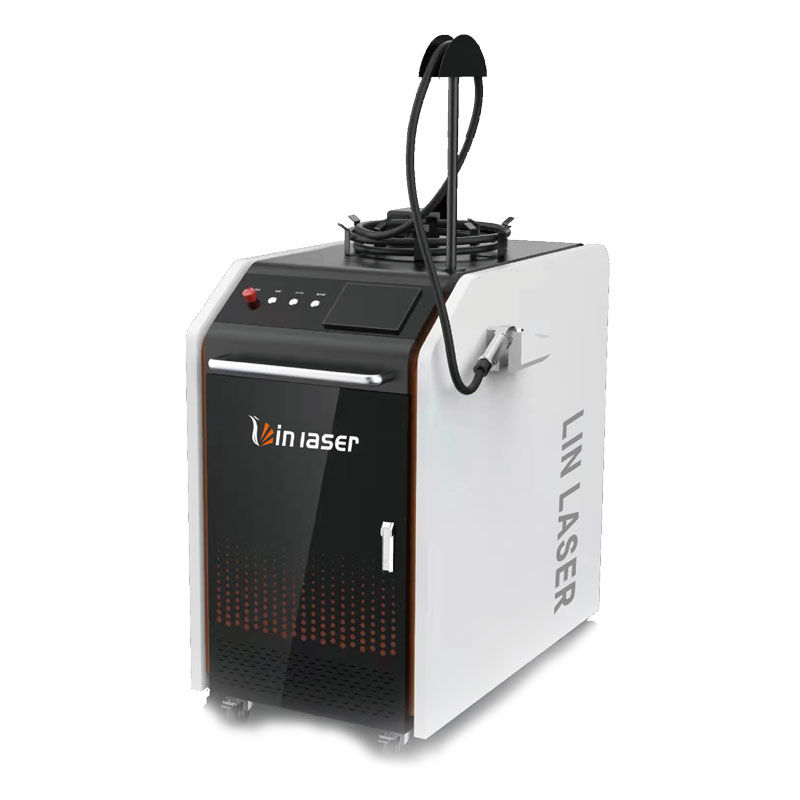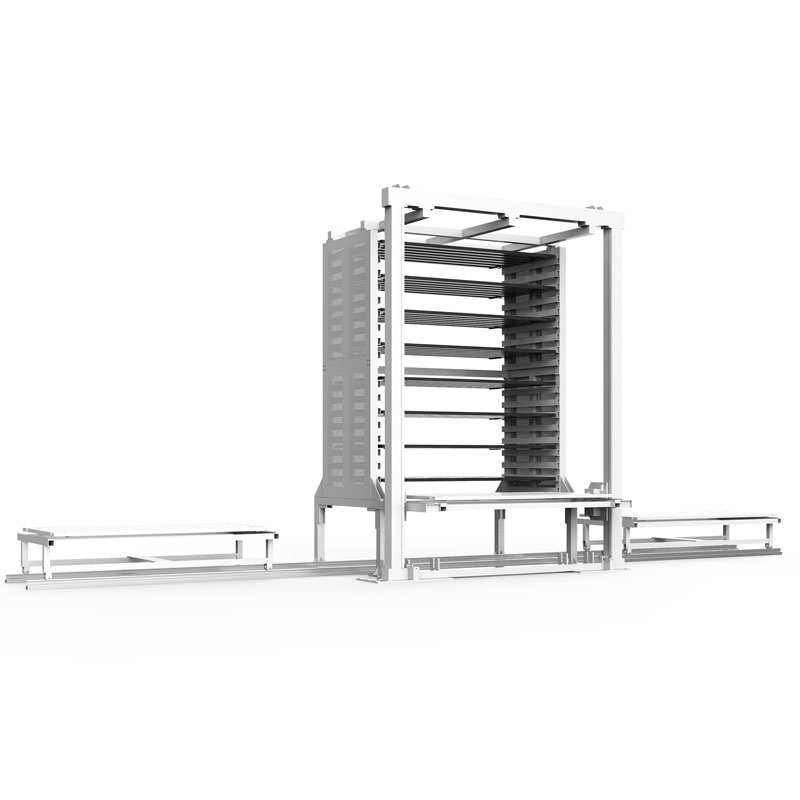The new 4-kW BLM LT7 fiber lasers at Sharpe Products can process tubing up to 6 in. OD and cut a wide variety of features.
When Paul Krickeberg started Sharpe Products in 1991, he did it because he believed he could offer better fabrication services to the market. Today, that spirit continues to fuel capital improvements that the company hopes will better position it to meet customer demand for tubular parts. Whole Cover Metal Cutting Machine

The company’s latest investment toward that end is a pair of BLM LT7 fiber laser tube cutting systems to match the one that has been running at the company’s New Berlin, Wis., facility for the past two years. The lasers mostly process material up to 0.25 in. thick. They mainly use nitrogen as an assist gas but will use oxygen for thicker material.
This new triad of laser tube cutting tech (in addition to the tube benders and other machinery on the floor) is helping Sharpe Products fortify what is perhaps its greatest strength—quick turnaround times. They are the latest additions to a company investment in BLM equipment that totals five laser cutters and four tube bending machines, for which the company creates its own dies—another practice it has adopted to stay ahead of customer demand instead of having to wait on another shop to grind the tooling it needs.
“We focus on delivering a high level of accuracy and consistency while also meeting the lead times required by our customers,” Krickeberg said. “We challenge ourselves to continuously offer short lead times. That’s our niche.”
The 4-kW machines cut parts from 0.5 to 6 in. OD—more than 90% of which are steel, stainless steel or aluminum. Those size parameters match the company’s bending and end forming machines, which also can accommodate parts up to 6 in. OD that customers use to manufacture truck exhaust and other emissions-related parts.
The new laser tube cutters can process bundles or single pieces automatically, a useful feature for shops like Sharpe Products that often do prototype work of one or two pieces. The machines can load and unload material up to 27 ft. long and up to 15.5 lbs./ft.
Having three virtually identical machines (called the 105, 106, and 107 in-house) provides a combination of excess capacity and uniformity that in essence allows the company to treat the three machines as one unit—with just one operator, if the situation allows. That tends to make product flow and scheduling a lot easier for people like Project Engineer John Nimmons and Manufacturing Engineer Marshall Arndt.
“Since we have duplicate machines, we don’t have to wait for an opening to process a specific part any longer,” said Nimmons, who started with Sharpe Products earlier this year and oversaw the installation of the lasers. “We’ve got 105, 106, and 107, but they’ve got a generic work center. Whichever machine happens to be open, it can [cut the part]. So, that gives us the capability to respond quicker.
“Depending on the part, it could be immediate. There’s a lot of them that just flow through without any further processing.”
This unified platform simplifies everything in Sharpe Products’ process, from quoting to scheduling to training to day-to-day machine operation. Before, it had to figure out the most profitable route for a part to take, depending on the machine and its availability—a redundancy the company no longer has to endure.
Sharpe Products President/CEO Paul Krickeberg is confident that the company’s latest investment will help it solidify its niche as a quick-turnaround parts supplier.
“We had three completely different tube lasers that all required a slightly different program,” said Arndt, who’s been with the company for more than five years. “So, everything was postprocessed a little bit differently. One machine couldn’t necessarily read another machine’s program. From quoting through production, there had to be three different programs run.
“We basically had to do the work three different times,” he said of the quoting and scheduling process. “Right now, we quote it on one machine … and whatever machine it’s going to run on, we dump our program in.”
Moving forward, that kind of interoperability gives the company more possibilities, not only for lead times and changeover time, but also in the types of work it can solicit.
“We now have a standard platform for our tube lasers,” Marketing Manager Kristen Crump said. “With all three systems on the same platform, we have more control over the lead times and what is ultimately possible. Having two years of experience running parts on the first LT7 purchased in 2021, our machine operators also have a better sense of what to expect."
Even with just a few weeks of experience with all three units running on its floor, Sharpe Products already is seeing benefits it didn’t enjoy with its old roster of machines. For example, the edge quality provided by the new lasers beats the old ones by a healthy margin, according to Nimmons and Arndt.
“I was working with an operator this morning, and she was showing me the cut condition of some parts that gave us some grief in the past—and they looked beautiful,” Arndt said. “It’s great. They’ll take a little bit of secondary operation, but that’s something we’ve had accounted for in the job for the past couple years. It’ll be a fraction of the time that it was before with the previous laser.
“Just the speed—as far as setup and running—is huge,” Arndt added. “We had a taste of it with our first LT7 compared to the other two machines we had, but now that all three of them are as capable and fast as that one, it’s changing everything. Everything’s a lot more efficient. Work just flows through so much faster.”
Nimmons noted that the control system can easily switch the tech table it’s working from, for example from cutting to etching, and produce etch quality that they’ve not seen before.
“Sometimes customers require numbers or verbiage on their parts,” Nimmons said. “And the test part that the technical guy [from BLM] did is probably the best etch I’ve ever seen. It almost looks stamped in, it’s that good.”
Krickeberg said that while Sharpe Products will take on longer runs of, say, 5,000 parts, which many shops consider a small job, going after longer-run business would mean the company is simply “joining the pack.” He feels this latest investment signifies that, even if the economy suffers a slowdown in the short term, his company is committed to its strategy.
Sharpe Products Tube Laser Operator Lead Theresa King inspects a part recently at the company’s plant in New Berlin, Wis.
“We replaced our two old lasers; you can look at that and think we’re not increasing capacity, but they are faster, helping us to streamline our overall production.” Krickeberg said.
“[That] sometimes is scary for some companies, because … we don’t usually have a backlog of more than a couple weeks of lasering,” he noted. “So, it takes a little faith to live there.”
The Tube & Pipe Journal
See More by Lincoln Brunner
Lincoln Brunner is editor of The Tube & Pipe Journal. This is his second stint at TPJ, where he served as an editor for two years before helping launch thefabricator.com as FMA's first web content manager. After that very rewarding experience, he worked for 17 years as an international journalist and communications director in the nonprofit sector. He is a published author and has written extensively about all facets of the metal fabrication industry.
Read more from this issue
Subscribe to The Tube and Pipe Journal
The Tube and Pipe Journal became the first magazine dedicated to serving the metal tube and pipe industry in 1990. Today, it remains the only North American publication devoted to this industry, and it has become the most trusted source of information for tube and pipe professionals.
Easily access valuable industry resources now with full access to the digital edition of The Fabricator.
Easily access valuable industry resources now with full access to the digital edition of The Welder.
Easily access valuable industry resources now with full access to the digital edition of The Tube and Pipe Journal.
Easily access valuable industry resources now with full access to the digital edition of The Fabricator en Español.
Ryan Fielding of Ringbrothers joins hosts Dan Davis and Josh Welton on this episode of The Fabricator Podcast,...
© 2024 FMA Communications, Inc. All rights reserved.

Whole Cover Metal Cutting Machine Not yet registered? Sign up